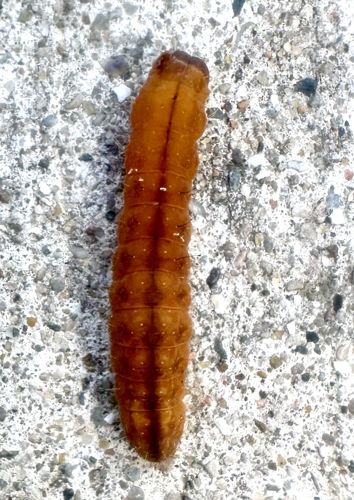Wireworm (larval stage)
Scientific Name: Various species within the family Elateridae (e.g., Limonius californicus, Melanotus spp.)
Order & Family: Order: Coleoptera, Family: Elateridae (Click Beetles)
Size: Wireworm larvae typically range from 1 to 4 cm (0.4 to 1.6 inches) in length. Adult click beetles vary in size depending on the species, generally from 0.5 to 4 cm (0.2 to 1.6 inches).

Natural Habitat
Wireworms primarily inhabit soil, especially in agricultural fields, gardens, and grasslands. They prefer moist, cool soil conditions but can survive a range of soil types. Adult click beetles can be found in various environments, including forests, fields, and gardens, often on vegetation or under debris.
Diet & Feeding
As larvae (wireworms), they are primarily herbivorous, feeding on seeds, roots, and tubers of various plants. They are significant agricultural pests of crops such as corn, wheat, potatoes, and vegetables. Adult click beetles generally feed on nectar, pollen, or decaying plant matter, and some are predatory on other small insects.
Behavior Patterns
Wireworms are the larval stage of click beetles. They live in the soil for several years (1-6 years, depending on species) before pupating and emerging as adult click beetles. They are mostly active in the soil, feeding on roots and underground plant parts. They move through the soil, attracted by carbon dioxide emitted by growing roots. Adults are typically nocturnal but can be seen in daylight. Adult click beetles are known for their ability to 'click' and jump when inverted, using a spine on their prosternum.
Risks & Benefits
Potential Risks: Wireworms are significant agricultural pests, causing considerable damage to crops by feeding on seeds, roots, and young plants, leading to reduced yields or plant death. They can be particularly problematic for germinating seeds and seedlings. Potential Benefits: Adult click beetles, though not widely recognized for direct benefits, are part of the larger food web and can be prey for birds and other insectivores. Some adult click beetle species are predatory, helping to control other insect populations. In their larval stage, they contribute to soil aeration but their destructive feeding outweighs this benefit in agricultural settings.
Identified on: 8/30/2025